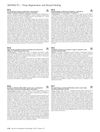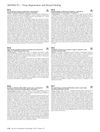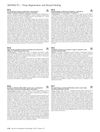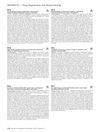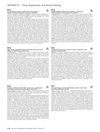Single-Cell Analysis Identifies Heterogeneity of Fibroblasts and Myeloid-Derived Adipocytes in Regenerating Mouse Skin Wounds
fibroblasts myeloid-derived adipocytes skin wounds single-cell RNA-sequencing wound fibroblasts hematopoietic markers myeloid origin single-cell western blot bone marrow transplantation lineage tracing wound myofibroblasts regenerated adipocytes skin wound healing adipocytes RNA-sequencing western blot myofibroblasts skin healing
TLDR Fibroblasts and myeloid cells in mouse skin wounds are diverse and can change into different cell types during healing.
The study investigated the diversity of fibroblasts in large skin wounds in adult mice using single-cell RNA-sequencing, revealing twelve distinct clusters of wound fibroblasts. Some clusters represented sequential states of fibroblast differentiation, while others were distinct lineages. A subset of fibroblasts expressed hematopoietic markers, indicating a myeloid origin. This was validated through single-cell western blot, RNA-sequencing, bone marrow transplantation, and lineage tracing experiments. The findings confirmed that hematopoietic lineage cells contributed to a subset of wound myofibroblasts and rare regenerated adipocytes, highlighting the heterogeneity and plasticity of fibroblasts and myeloid cells in skin wound healing.
